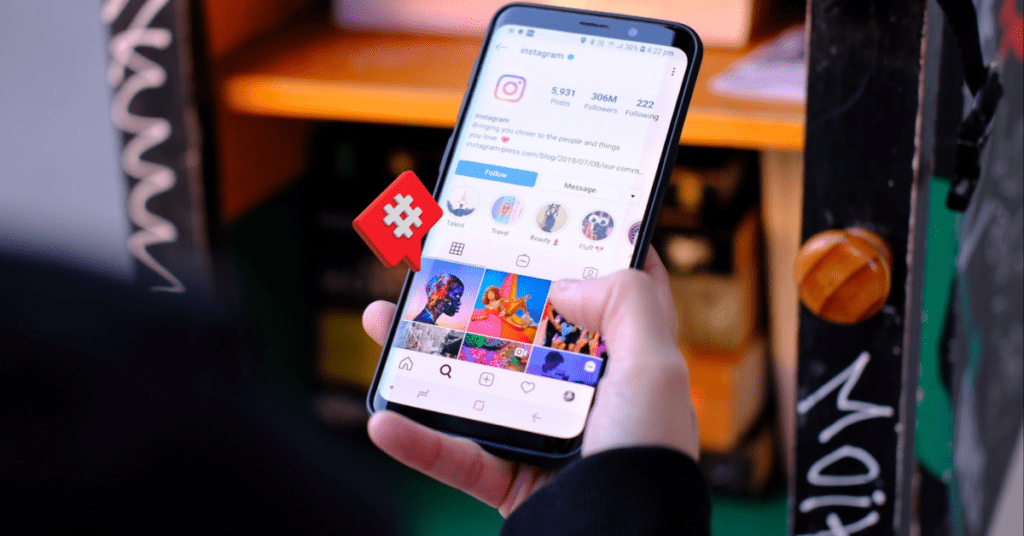In the bustling world of Instagram, cutting through the noise can feel like shouting in a crowded stadium. But what if you had a secret weapon to amplify your voice and guide the right audience straight to your content? That’s exactly what effective hashtags can do for your Instagram posts. These little pound signs aren’t just trendy additions to your Instagram captions; they’re powerful tools that can boost your visibility, engage your target audience, and ultimately grow your Instagram presence.
But here’s the catch – not all hashtags are created equal, and randomly sprinkling popular tags on your posts won’t cut it. That’s where strategic hashtag research comes in. By mastering Instagram Hashtag Strategies, you’ll unlock the potential to reach new heights on the platform. This includes understanding how to find the right mix of popular and niche tags, when to use them, and how to create a cohesive hashtag strategy that aligns with your brand.
In this guide, we’ll dive into the art and science of researching effective Instagram hashtags, empowering you to make your mark in the Instagram universe and connect with your ideal audience.
- Why Hashtags Matter on Instagram
- Setting Clear Goals for Your Hashtag Strategy
- How to Research Effective Instagram Hashtags
- Analyzing Hashtag Performance
- Case Study: How @plantkween Grew Their Account
- Testing and Refining Your Hashtag Strategy
- Creating Your Own Branded Hashtag
- Best Practices for Using Hashtags
- Conclusion: Your Path to Hashtag Success
Why Hashtags Matter on Instagram
Imagine you’re at a huge party where everyone’s talking at once. How do you make sure the right people hear what you’re saying? On Instagram, hashtags are your megaphone. They help your content cut through the noise and reach the people who are most likely to be interested in what you’re sharing.
When you use a hashtag, your post becomes discoverable to anyone searching for or following that tag. This means more eyes on your content, even from people who don’t follow you yet. It’s like leaving breadcrumbs for your target audience to find you.
But here’s the catch: not all hashtags are created equal. Using the wrong ones is like shouting into the void – nobody’s going to hear you. That’s why researching and choosing the right hashtags is crucial to your Instagram strategy.
Setting Clear Goals for Your Hashtag Strategy
Before you start diving into hashtag research, take a step back and ask yourself: what do I want to achieve? Are you looking to:
- Reach more people?
- Boost engagement on your posts?
- Build a community around your brand.
- Promote a specific campaign or product?
Your goals will guide your hashtag choices. For instance, if you’re a local bakery wanting to attract nearby customers, you might focus on location-based hashtags like #NYCbakery or #Brooklynfoodie. On the other hand, if you’re a fitness influencer aiming to engage with the wider fitness community, you’d look for popular fitness-related tags like #fitnessmotivation or #workoutathome.
Remember, your hashtag strategy isn’t set in stone. As your goals evolve, so should your approach to hashtags. Stay flexible and be ready to adapt your strategy as needed.
How to Research Effective Instagram Hashtags
Now that we’ve covered the ‘why,’ let’s get into the ‘how’ of hashtag research. Here are some effective methods to find the right hashtags for your content:
- Use Instagram’s Search Function
Start with Instagram’s search function. Type in keywords related to your content and see what hashtags pop up. Pay attention to the number of posts using each tag – this gives you an idea of its popularity.
For example, if you’re a travel blogger, you might start by searching for #travel. Instagram will show you related hashtags like #travelgram, #travelphotography, or #traveltheworld, along with the number of posts for each.
- Analyze Your Competitors
Take a look at what hashtags your competitors or similar accounts in your niche are using. Don’t just copy them – use their choices as inspiration to find relevant tags for your content.
- Check Out Industry Influencers
Influencers in your field often have their finger on the pulse of trending hashtags. See what tags they’re using consistently, especially on their most engaging posts.
- Use Hashtag Research Tools
There are numerous tools available that can help streamline your hashtag research. Some popular options include:
- Hashtagify: Offers detailed analytics on hashtag performance
- RiteTag: Provides real-time hashtag suggestions based on your content
- DisplayPurposes: Helps you discover related hashtags and provides engagement metrics
While these tools can be helpful, remember that they’re just aids. Your analysis and understanding of your audience should guide your final decisions.
Analyzing Hashtag Performance
Once you’ve got a list of potential hashtags, it’s time to dig deeper and analyze their performance. Here’s what to look for:
Relevance
First and foremost, make sure the hashtag is relevant to your content. Using #foodie on a post about your new sneakers might get you some views, but it won’t attract the right audience.
Post Volume
Check how many posts are using the hashtag. A hashtag with millions of posts might seem great, but if there are thousands of new posts every minute, your content could get buried quickly. On the flip side, a hashtag with too few posts might not have enough traffic to boost your visibility.
Engagement Rates
Look at the top posts for each hashtag. How much engagement do they get? If the top posts have high engagement rates, it’s a good sign that the hashtag has an active, interested audience.
Audience Demographics
Try to get a sense of who’s using the hashtag. Are they aligned with your target audience? For instance, if you’re targeting young adults, a hashtag primarily used by retirees probably isn’t your best bet.
Case Study: How @plantkween Grew Their Account
Let’s look at a real-world example of effective hashtag use. Christopher Griffin, known as @plantkween on Instagram, grew their account from 300 to over 200,000 followers in just two years. One of their key strategies? Smart use of hashtags.
Christopher uses a mix of popular plant-care hashtags like #plantparenthood and more niche tags like #blackbotanist. This combination helps them reach both broad and specific audiences interested in their content.
They also created their hashtag, #plantqueenaffirmations, which they use consistently on their motivational posts. This branded hashtag has helped build a sense of community among their followers and makes it easy for fans to find more of their inspirational content.
Visit Their Instagram: @plantkween
Testing and Refining Your Hashtag Strategy
Remember, finding the right hashtags is an ongoing process. Here’s how to continuously improve your strategy:
Try Different Combinations
Don’t use the same set of hashtags on every post. Try different combinations and see which ones perform best. You might find that certain hashtags work better for different types of content.
Track Your Results
Keep an eye on your Instagram Insights to see which posts are getting the most reach and engagement. Pay attention to the hashtags you use on these high-performing posts.
Stay Up-to-Date
Instagram’s algorithm changes frequently, so what worked last month might not work as well now. Stay informed about platform updates and be ready to adjust your strategy accordingly.
A/B Testing
Try using different sets of hashtags on similar posts and compare their performance. This can help you identify which hashtags are truly driving engagement for your content.
Creating Your Own Branded Hashtag
Once you’ve got the hang of using existing hashtags, why not create your own? A branded hashtag can help build community around your content and make it easier for fans to find and engage with your posts.
When creating a branded hashtag:
- Keep it short and memorable
- Make sure it’s unique to your brand
- Use it consistently across your posts
- Encourage your followers to use it, too
For example, the fashion brand Aerie created #AerieReal to encourage users to share unretouched photos. This hashtag has been used in over 380,000 posts, creating a strong community around the brand and its values.
Best Practices for Using Hashtags
To wrap up, here are some key best practices to keep in mind:
- Please don’t overdo it: Instagram allows up to 30 hashtags per post, but that doesn’t mean you should use all 30 every time. Most experts recommend using between 5 and 15 relevant hashtags per post.
- Mix it up: Use a combination of popular, niche, and branded hashtags to maximize your reach.
- Place hashtags strategically: You can put hashtags in your caption or a comment on your post. Test both methods to see what works best for you.
- Avoid banned or spammy hashtags: Some hashtags have been banned by Instagram due to inappropriate content. Always check before using a new hashtag.
- Use hashtags on Stories and Reels, too: Don’t forget that you can use hashtags in your Stories and Reels as well as in your regular posts.
Conclusion: Your Path to Hashtag Success
Researching effective Instagram hashtags takes time and effort, but it’s a crucial part of growing your presence on the platform. Start with broad research, narrow down to niche tags, analyze their performance, and don’t forget to test and refine your strategy continuously.
Remember, there’s no one-size-fits-all approach to hashtags. What works for one account might not work for another. Keep experimenting, stay patient, and watch your Instagram engagement grow!
With these tools and strategies in your arsenal, you’re well on your way to mastering the art of Instagram hashtags. Happy hashtagging!



